Ice Dams
See What's Really Going On!
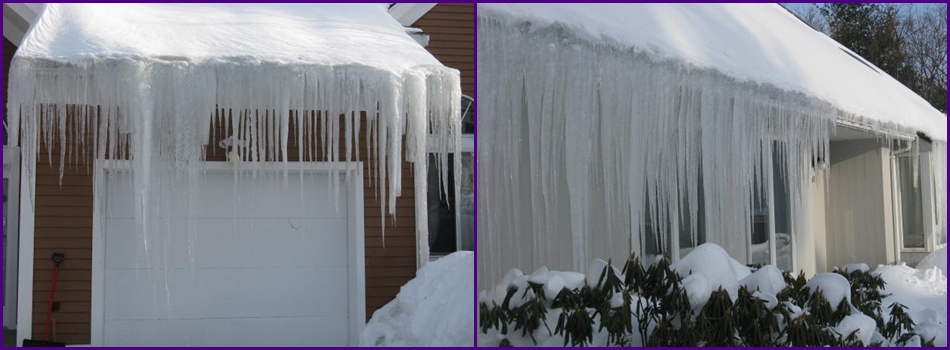
Ice dams in Massachusetts are a persistent problem, often causing significant damage to soffit cavities, fascia boards, roof sheathing, shingles, gutters, and interior walls. While ice build-up and water damage can be effectively prevented, the underlying cause of each ice dam can vary depending on the specific conditions of the home.
Let me explain how this large ice mound forms along the outer edge of your roof. When it snows, the snow accumulates across your entire roof as the outdoor temperature drops below freezing.
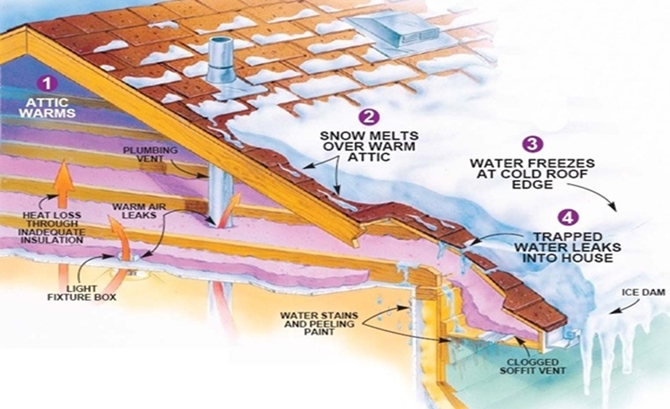
1.) In homes with inadequate insulation, the temperature inside the attic cavity often rises above freezing. This occurs as heat from the living areas below escapes through poorly insulated attic floors, cathedral ceilings, and wall cavities. As a result, the trapped heat warms the roof cavities and roofing materials, causing the roof's surface temperature to rise above freezing.
2.) Due to the temperature difference and the warmed roofing material, the snow on the roof begins to slowly melt. As the water forms, it flows down the roof’s slope beneath the remaining snow, attempting to drain off the roof and into the gutters.
3.) When the water reaches the outer edge of the roof, where temperatures are much colder than inside the attic, it becomes exposed to the freezing air. This causes the water to freeze, forming an ice mound that clings to the roofing material along the roof’s edge and within the gutters, if present.
4.) As more melted snow continues to flow down your roof, it freezes behind and on top of the existing ice, forming a larger ice dam that acts like a barrier. This dam traps the water attempting to drain off the roof. With nowhere to go, the water accumulates, forming a thick ice mound along the roof's edge.
Eventually, this ice buildup backs up and forces its way beneath the outermost roofing material. Once it breaches the roof's surface and enters the warmer attic cavity, it begins to melt. The resulting water drips into the soffit and upper wall cavities, gradually seeping into your living area walls. This infiltration often results in expensive moisture damage and mold growth within the wall structure.
As the water continues to spread, you may notice brown staining on your interior walls and possibly your exterior siding. At this point, the wet walls must be removed to access and replace the damaged insulation inside the wall cavities. Delaying this process can lead to significant mold growth, requiring the services of a licensed mold mitigation company to address the issue and prevent further damage.
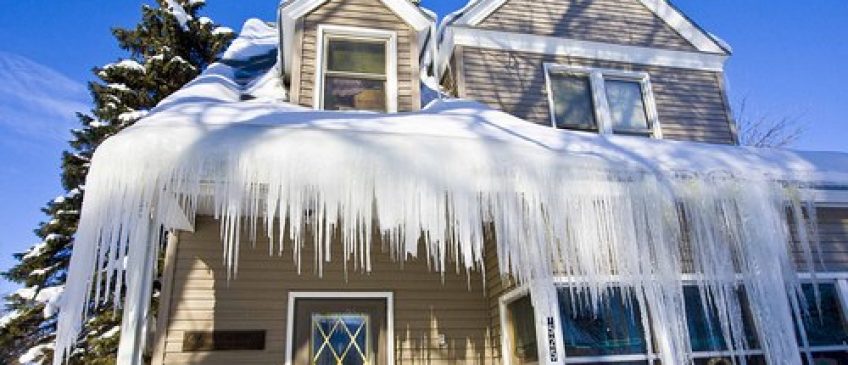
|
Attention Home Inspection clients: If Massachusetts Home Inspections notes on page 12 #13 of your home inspection report that staining from ice dams have occurred in the past, it would be impossible for me to assess any concealed damage to the exterior roof edges or the wall cavities beneath the affected areas. In such cases, I strongly recommend requesting documentation from the Seller that verifies the ice dam issues have been professionally resolved. If no proof of ice dam remediation is available, I highly recommend hiring an industrial hygienist to conduct mold testing within the home before the closing date. Should mold be detected, the remediation process can be extremely costly. With this information, you may be able to negotiate the costs of addressing the necessary repairs. |
When deep snow accumulation on your roof becomes uneven (as in the image below), it often indicates poor attic insulation. Heat from your living space is escaping into the attic, causing the snow to melt unevenly. To address this, you should focus on adding sufficient insulation to your attic to prevent heat loss. Your attic should remain the same temperature as the outside environment, ensuring that the snow on your roof stays evenly distributed throughout the winter months, alleviating ice dams.
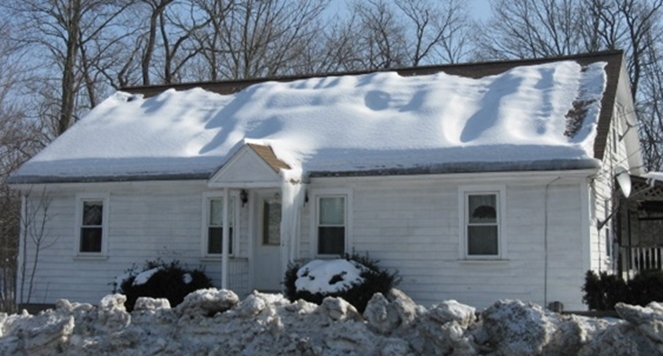

The heat escaping into your attic will cause the snow on your roof to melt quickly, leading to the formation of ice dams. Take note of the heavy ice buildup along the roof edge. This ice accumulation can result in expensive repairs if the melting ice seeps under your shingles and drips onto the interior walls and ceilings below the ice dam.
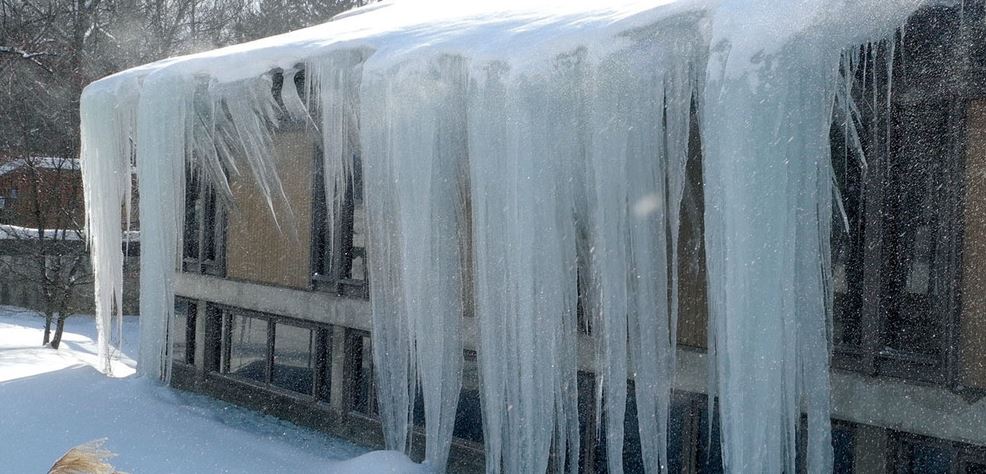

When a thick ice dam forms along your roof edge, this is what the soffit cavity will look like when you remove the soffit material.
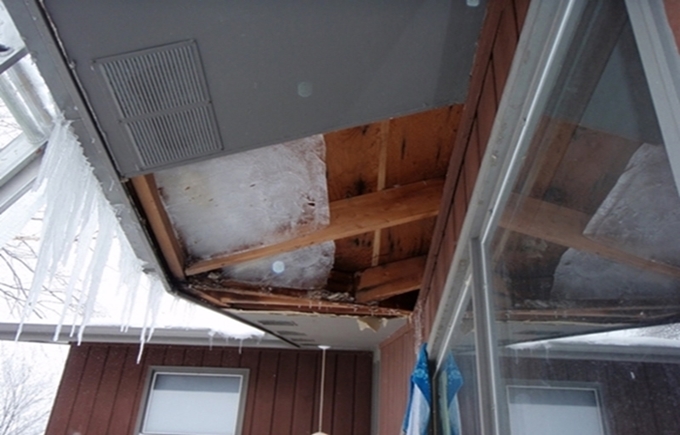
Preventing thick ice from forming along the edge of your roof is entirely avoidable. Many homeowners research how to prevent ice dams and learn that proper insulation and ventilation are key. While this is helpful, after gaining this knowledge, many attempt to fix the problem themselves in an effort to save money, only to become frustrated and unsure of where to make improvements. That’s when they call me in to assess the situation. I’ll walk homeowners through their specific issues and show them the proper steps to eliminate this troublesome ice buildup.
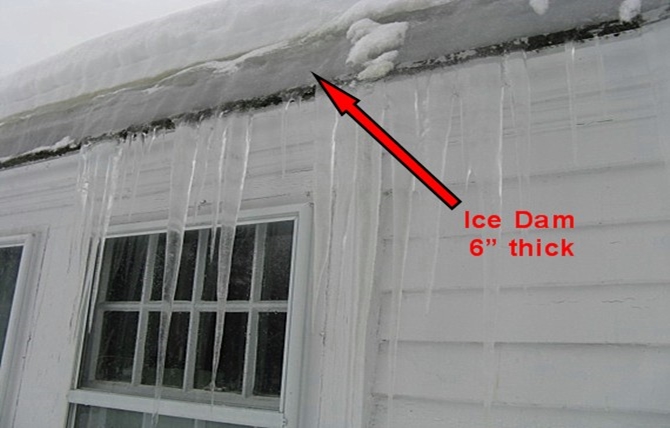
The solution to resolving your ice dam issues is straightforward: combining infrared technology with my professional experience in handling numerous ice dam cases. My infrared inspection provides an immediate snapshot of any active heat loss seeping through your ceilings and the outer walls of your home. Insufficient insulation allows heat to escape, transforming it into a conductor for your conditioned air, which makes it easy for me to detect areas with poor insulation throughout your home. Infrared imaging offers a clear thermal map of poorly insulated ceiling and wall cavities that contribute to ice dams forming along the roof edges and walls. While attic access is helpful for identifying the root cause of ice dams, thermal imaging doesn’t require access to your attic, ceilings, or walls. It can easily detect uninsulated or under-insulated areas as long as there’s a temperature difference of 15+ degrees on the opposite side of the surface being scanned.
Take a look at the images below to see how easily infrared technology detects uninsulated or problematic cavities where ice dams have formed.

Infrared clearly reveals cold air (indicated by blue) infiltrating the living area.
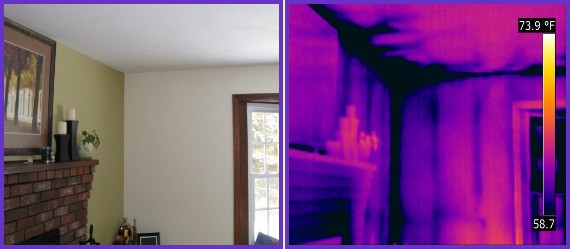

Infrared detects areas with missing insulation in all outer ceiling cavities.
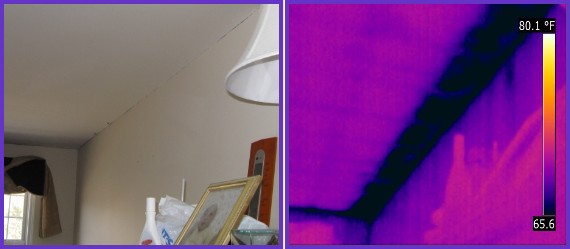

Infrared identifies cold spots caused by improperly installed soffit vents.
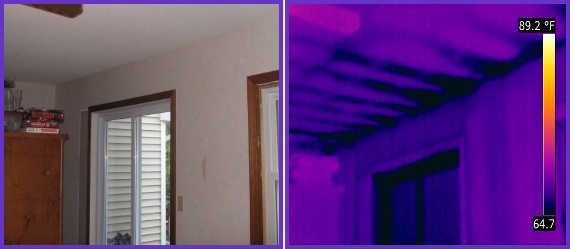

Infrared detects insulation voids above this bathroom ceiling.
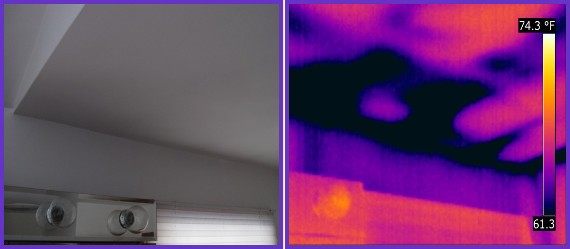

Brown staining on siding... explained.
The brown ice clinging to this particular siding was caused by excessive ice dams at the eave. The ice dam trapped a large amount of ice and water inside the outer edges of the attic cavities, which are located just above the exterior walls. When the ice dams finally melted due to sun exposure and heat loss from the living area (caused by inefficient attic insulation), the resulting moisture dripped down into the soffit, which was filled with dust, mouse droppings, and tannins from the cedar siding. This dirty moisture then seeped into the wall cavities, building materials, and insulation, eventually leaching out of the lower openings of the siding as a dark brown liquid. As this liquid came into contact with the cold air, it froze again, creating the massive brown ice buildup you see here.
As you can see here, this messy brown liquid seeps out from the soffit and leaks from behind the clapboard siding.

Infrared detects insulation damage from a previous ice dam (indicated by dark blue areas).
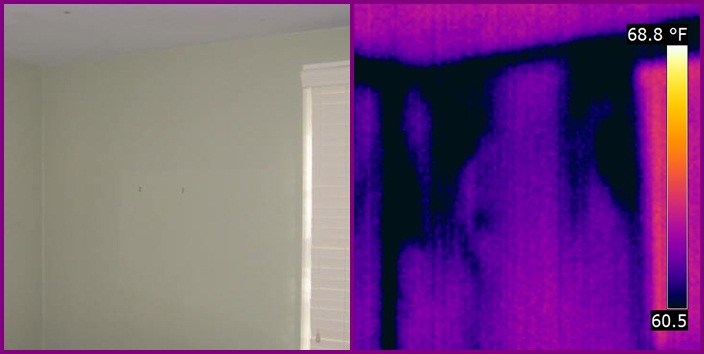

This church experienced ice dams, with dark brown liquid leaking out from the fascia and siding below the belfry soffit.

It's too late to remove snow from your roof edges now.
Homeowners can often remove accumulating snow from the edge of their roof with a snow rake, but by the time they do so, it’s usually too late. Take a look at the image above, where a homeowner attempted to clear the snow, thinking it would prevent the ice dam from worsening. However, they discovered a 4-6 inch thick ice sheet coating the entire roof edge, extending 6-8 feet up the roof. This thick ice sheet clings tightly to the roofing material, making it nearly impossible to remove at this point. If preventive measures had been taken earlier to avoid the ice dam, this area of the roof wouldn’t be an issue.
It’s crucial to clear all fresh snow immediately after each snowfall to prevent further ice buildup, which can damage your roof, interior ceilings, and walls. Keep in mind, a permanent fix is to improve all attic insulation in order to avoid ice dam nightmares.
View more ice dams images in Massachusetts by clicking below.
For more information, please go to the top right corner and click "Navigate."
